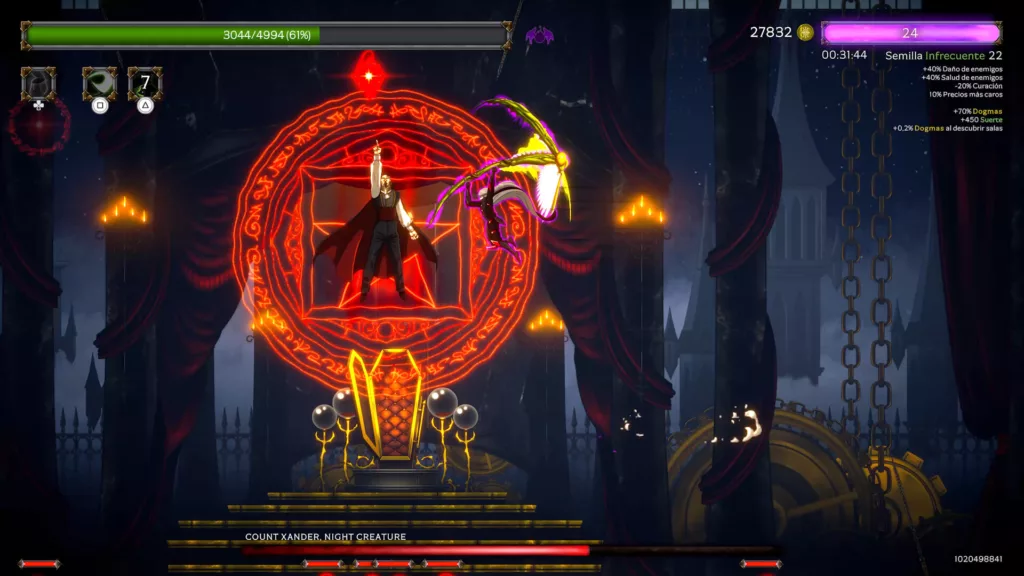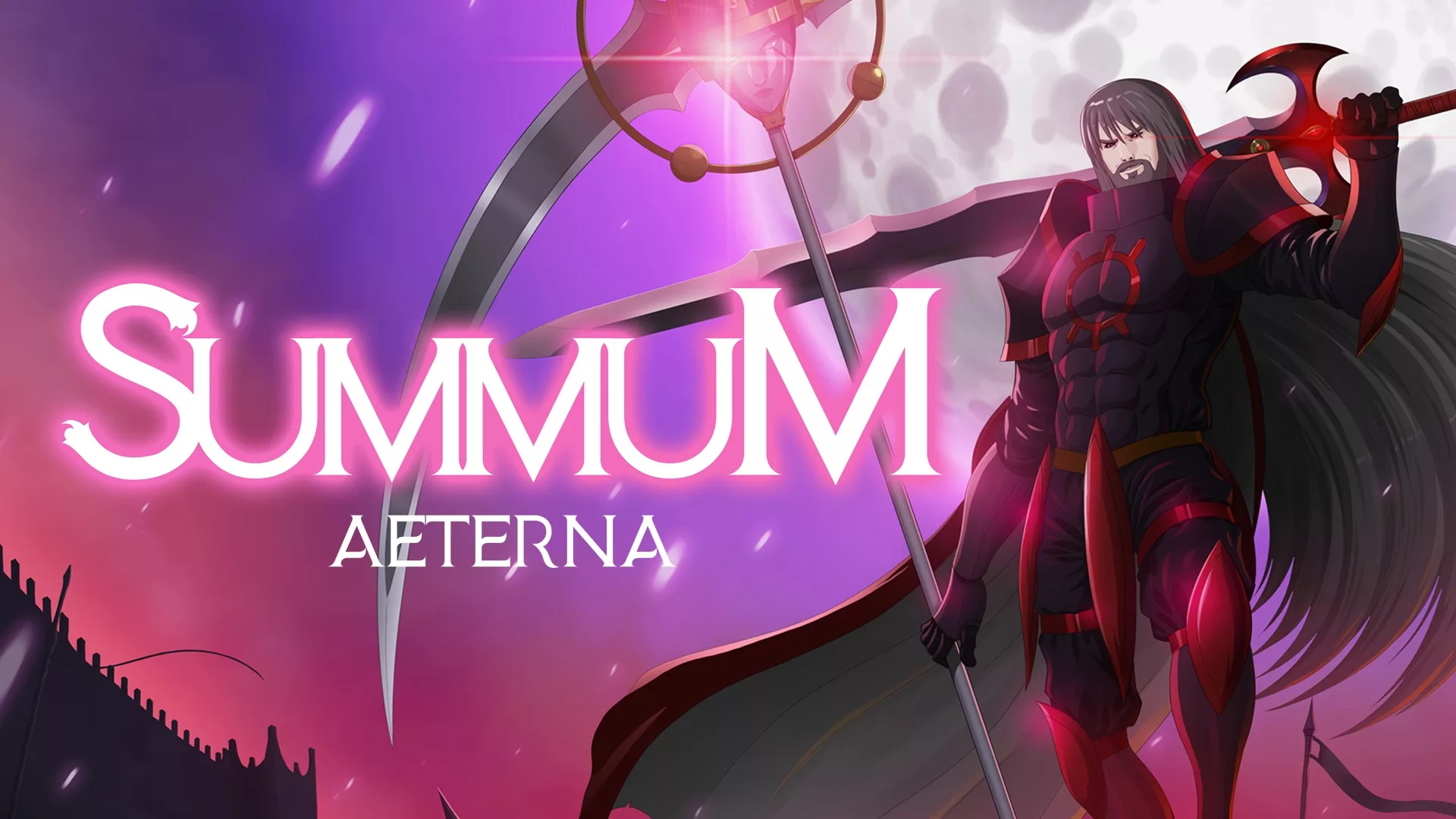Summum Aeterna is another procedurally generated, 2D roguelike darling on Steam at the moment. Taking inspiration from the likes of Metroid and Castlevania, players will traverse several different worlds, gaining XP and levelling up their inventories. But this time, there’s a twist!
While most of these kinds of games drop you in a random environment, here players can tune their experience to their liking via seeds. These provide extra challenges like +5% enemy health, all the way up to the more complex abilities like chaos gates that curse you for the chance to unlock a perk or boost. These are collected from chests that are found during runs, and come with different difficulty levels. The ability to tweak the game is a welcome addition but as I’ll discuss later on, it’s pretty poorly explained and very in-depth. It appears simple to start with, but you can modify these seeds in a germinator to mix things up. I never got my head round it to be honest.

The problem for me, arises with this randomness. The level layouts are procedurally generated and consist of rooms of varying sizes, filled with enemies and traps. Standard stuff, but the design of these rooms is boring and frankly unchallenging. I was weirdly unimpressed with the background artwork. There is a good variety with Roman style streets, medieval castles and Japanese towns. Forests, snow covered mountains and futuristic looking anomaly zones. There’s a lot of detail and everything looks sharp – the Japanese areas can look particularly lovely – but it all felt a bit flat. There was a softness to everything as well. I understand this is a criticism that can be levelled at any roguelike, but it feels like there is very little handcrafting of levels. They lack little details like destroyable objects or interesting backgrounds. Its serviceable, but comparing it to others in the genre, its lacking.
Thankfully the combat is a little better, but again it lacks substance. Most enemies are easily stun locked by the most basic sword attacks but killing them feels satisfying. There’s a multitude of weapons and armour to discover during runs coming in one of three variants. The first weapon you’ll use is a sword and you get all the usual perks, like poison, bleed and vampire. Soon after you’ll unlock scythes and guns. Each have benefits and disadvantages, for example, the sword has a better reach, but doesn’t have as good an aerial attack as the scythe. The guns have great range and keep you out of harms way, but you can’t hit things through walls. The weapons have upgraded versions and there are evolutions available as well, with these being stronger and possessing more perks. And you’ll need all the help you can get to take on the bosses you’ll meet at the end of each area.

This is the one area where the game has received a lot of love. These are like mini puzzles which must be deciphered in order to succeed. Not in the traditional sense of course, but in so far as, it is essential to learn the attack patterns otherwise they will wreck you. These are typical skill checks, where everything you have learned is put to use. Ducking, dodging, sneaking in an attack combo and getting out without a scratch is genuinely fun. Getting a great set of perks – vampire to steal health on every hit, poison for damage over time, and big health boosts – will often see you through some of the easier fights and can be won with brute force, but it rarely works.
Death is inevitable and this is when you are returned to the hub. Here you can upgrade armour and weapons, unlock new weapons, upgrade stats, unlock permanent perks and grow more powerful seeds. This is where another issue reared its ugly head – there are far too many currencies. XP earns levels, player levels earn crystals and crystals unlock perks and boosts. Gold is used on each run to buy weapons and perks. But to upgrade weapons you’ll need ingots. Then there’s another one to upgrade armour, and another to unlock weapons and the list goes on… It turns the whole game into an endless grind.

The game also seems to be heavily inspired by Hades in regards to story telling. Players assume the role of the boss, who I think is a vampire – he’s a bad guy for a change. The story is told via conversations with key characters and is told in a vert aloof way. It appears some bigger bad is trying to stir things up with the main character and all the other bosses, so you need to put them in their place. I did get a weird bug during story sections where the text would randomly be in Spanish. It really took me out of things and I had little interest in what story was here as I was missing key information.
While I have a history enjoying these types of games, Summum Aeterna just reminded me of so many others that, in my opinion, do it much better. Fighting regular enemies was too easy and the environmental traps weren’t dangerous. Exploration didn’t feel rewarding and the scenery was uninteresting. It’s far too complicated and requires far too much time to get to a point where anything starts to feel fun. It also lacks that “one more go” feeling that is essential in a roguelike. I wanted to like Summum Aeterna, but it just didn’t grab me. I rarely felt the need to keep going and saw most of the game in my playtime.
Overall
-
CX Score - 65%65%
Summary
Pro
- Bosses
- Lots of unlockable gear
- Endless gameplay
Cons
- Weird text bug
- Uninspired environments
- Too many currencies

